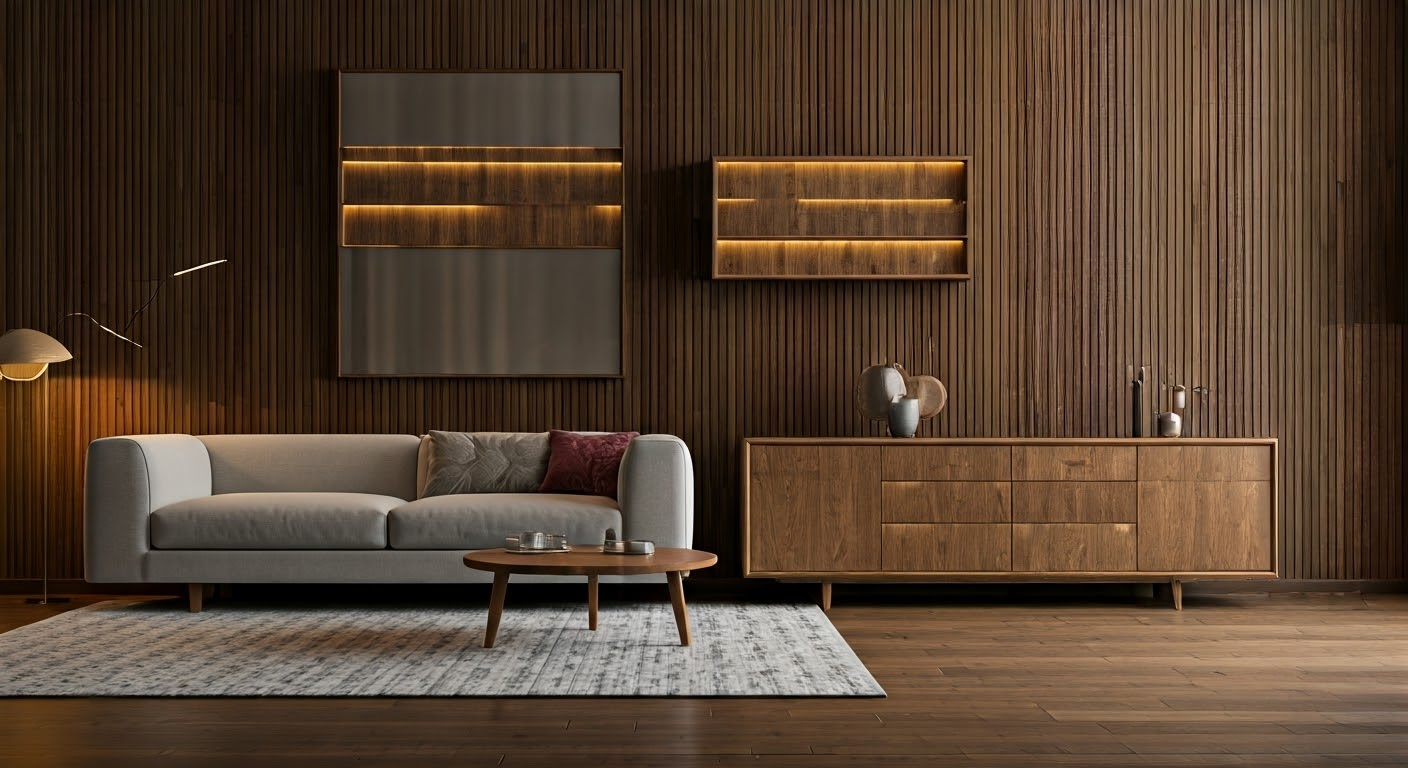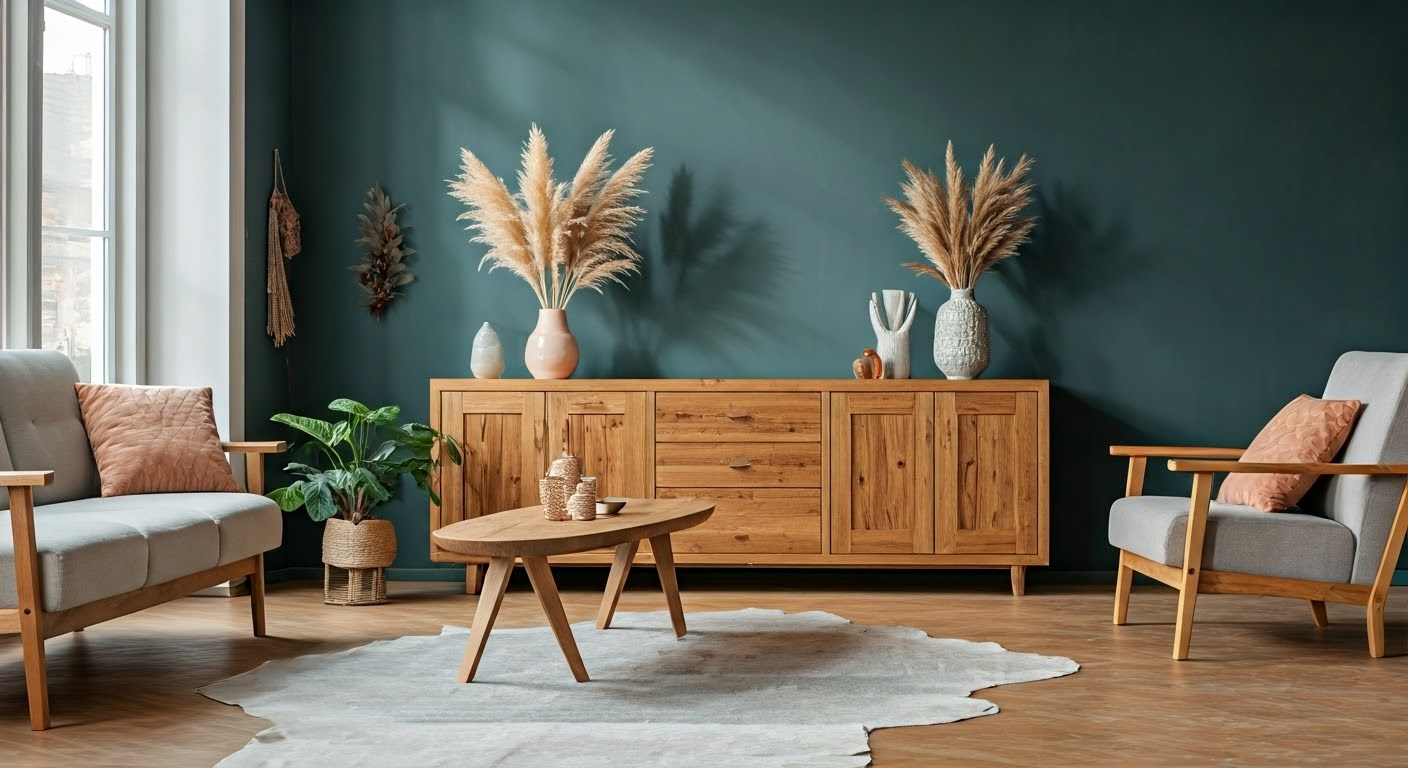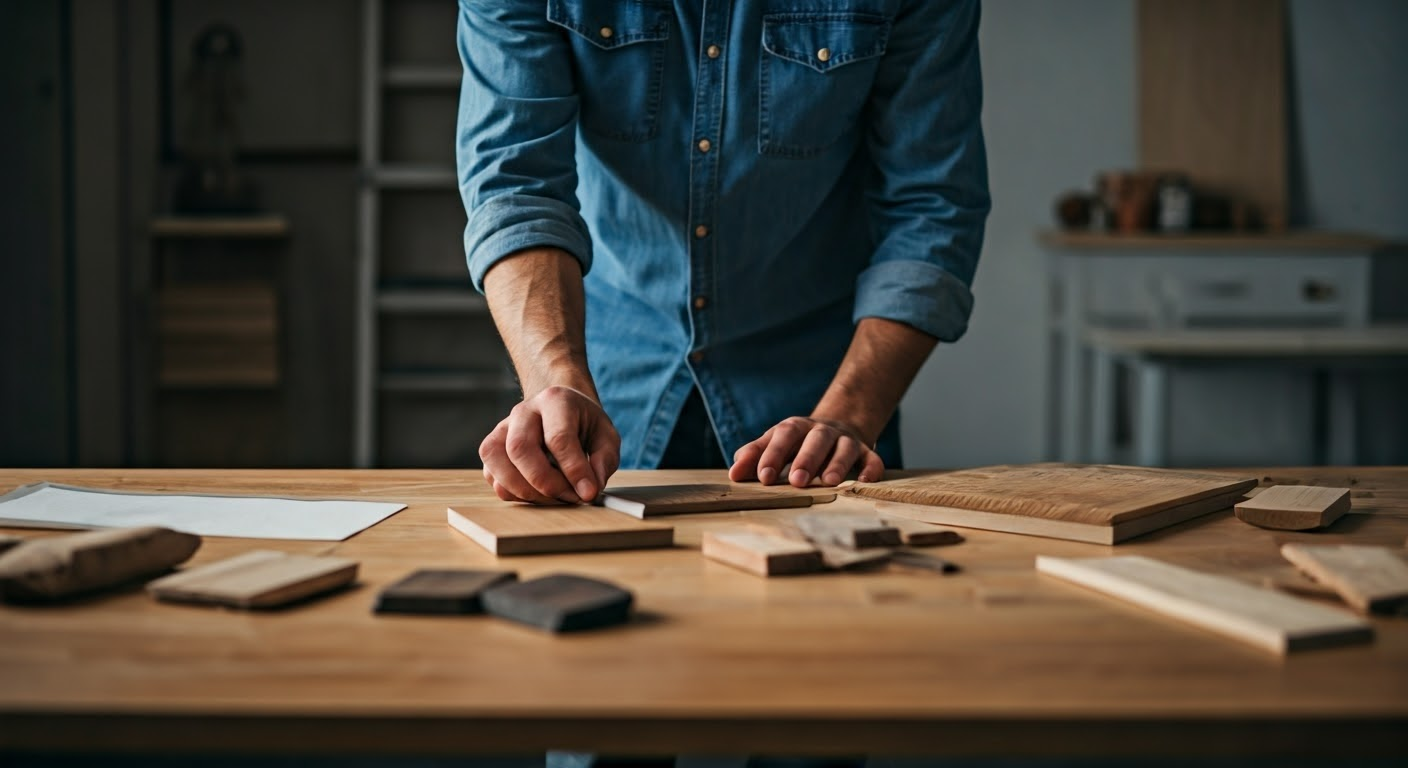How to Mix Wood Tones Like a Pro (Without Your Home Looking Like a Furniture Showroom Fail)
 Furnzy
Furnzy
Key Highlights
Mixing wood tones adds depth and character to a room, creating a curated and harmonious interior design.
Matching undertones—warm, cool, or neutral—is the secret to a cohesive look.
A dominant wood tone acts as the anchor for your design, allowing contrasting tones and textures to shine.
Visual separators like rugs and cushions help balance multiple wood finishes in one space.
Layering with non-wood elements such as textiles, glass, or metals enhances the overall aesthetic.
Limit wood tones to two or three for a balanced, less chaotic design.
Introduction
When thinking about interior design, wood tones stand out as classic and interesting. Using sleek wood flooring or a beautiful walnut coffee table can add warmth and balance to your home. The key is to mix wood tones wisely so your space doesn’t look jumbled. You need to choose one dominant wood and combine it with other tones. This way, you can get the hang of pairing different woods and create a pleasing look in your home without making it feel like a furniture store.
Understanding Wood Tones and Their Impact on Interior Design

Wood tones are not just “brown.” They are mixes of warm, cool, and neutral colors that change how a room feels. Recognizing these undertones is like creating music; each tone helps shape the room's character and atmosphere.
A common mistake in design is to see wood as a single style. When you learn about the different textures and tones, wood turns into a powerful tool. It can add depth and personality to your interior design.
The Importance of Wood Tones in Home Aesthetics
Wood tones are important in home decor. They do more than just serve a purpose. They add visual interest by mixing different textures and colors. This mix helps create a balanced look in any space. When you combine wood tones, it brings character and charm. It’s like telling a story through your home.
The right mix of wood tones also adds elegance and warmth. By using lighter woods with darker ones or matching polished finishes with rustic grains, you can create a refined look. The key is pairing similar grains for harmony or choosing contrasting shades for a bold touch.
Moreover, wood works well with other materials like textiles, rugs, or vintage items. Different finishes and patterns prevent the room from feeling flat or dull. Instead, it creates a space that looks carefully put together and inviting. Blending wood tones is essential for achieving a lovely and cohesive decor.
How Different Wood Tones Influence Room Atmosphere
Different wood tones can really change how a room feels. Warm undertones, like cherry or maple, create a cozy and inviting atmosphere. This is great for living rooms or dining areas where families gather. These tones help make the space feel lively.
Cool woods, such as ash or birch, emphasize calmness. Their greyish color gives a modern touch, making them perfect for bedrooms or offices where you want to stay relaxed and focused. These tones help your room feel sleek and simple.
Neutral wood tones serve as a good balance between warm and cool undertones. They blend well with other materials. Pairing lighter woods with darker ones, like walnut or dark walnut, creates a layered look that adds depth and character. Each wood piece in the room enhances the style without fighting for attention.
Essential Tools and Resources for Mixing Wood Tones
When using different wood colors in your design, begin with tools like wood samples, a color wheel, and close-up photos of your wooden furniture or flooring. These tools help you see undertones like warm, cool, or neutral.
Also, digital design tools or apps can help you picture your choices before you decide. Pairing these tools with samples of non-wood materials—like textiles or accessories—makes sure everything fits together nicely. Think of this as a safety net for your design to avoid any mismatched chaos.
Identifying Your Home’s Dominant Wood Tone
Your main wood tone is key to your home's design. This tone usually comes from the largest piece of wood furniture, like dining tables, console tables, or big cabinets. It sets the base for your style and helps in adding other wood tones that either contrast or match.
For example, if you have a dark walnut dining table that stands out, you should choose lighter wood pieces, like coffee tables or chairs, to balance things out. This helps create a smooth and unified look.
By finding your main tone first, you avoid the problem of mismatched wood that can look too busy. After that, try to combine different textures and stains that connect your space. Remember, you want harmony, whether you use warm cherry wood or cool birch. This careful choice keeps your design together, without making it feel random.
Tools Needed to Evaluate Wood Undertones and Textures
To successfully mix wood tones, start by evaluating the wood elements in your home. Here’s a simple table you can use:
| Wood Type | Mass Tone | Undertone | Grain Texture |
| Walnut | Dark brown | Neutral warmth | Smooth, polished |
| Birch | Light beige | Cool grey | Rugged, coarse |
| Cherry | Rich red | Warm undertone | Closed grain |
Examining factors like grain texture—the difference between smooth finishes like cherry and coarse textures like oak—helps define the character of the piece.
On top of visual evaluation, tools such as lighting swatches can clarify how the undertones interact with your room feel. Warm woods contrast with cool accessories better in proper lighting, whereas neutrals blend seamlessly regardless of the surrounding colors. This attention to wood color details elevates your design strategy.
Step-by-Step Guide to Mixing Wood Tones

Mixing wood tones is an art and can be a bit tricky. Here are some simple steps to help you:
Choose your dominant wood tone first, as it will be the main part of your design.
Add some contrasting tones and textures to create more depth.
Use non-wood materials like textiles, area rugs, or metals to balance everything for a put-together look.
By following these easy steps, you can mix different wood tones and make a design that reflects your style.
Step 1: Choose Your Dominant Wood Tone
Your main wood type sets the mood for your space. First, find the biggest or most important piece of furniture, like your coffee table or dining table. This main piece shapes the room and guides the choice of other wood tones.
For example, if you have a dark walnut coffee table, let it stand out. Use design items that match its richness, like neutral fabrics or lighter woods for contrast. If your dominant woods are lighter, like birch or maple, they work well with darker accent woods. This avoids making the room feel too bright.
Keeping the main tone the same in important areas, like the living and dining rooms, helps create a theme. You can enhance this with smaller decorations and accessories. This is a good rule of thumb for a neat and put-together look.
Step 2: Incorporate Contrasting Wood Tones as Accents
Using different wood colors can add energy to your design. It makes it feel deeper and more exciting. Here are some ways to use them:
Accent Pieces: Use a light birch console with dark walnut decor to create balance.
Furniture Layers: Mix different wood types, like oak kitchen cabinets with cherry dining chairs.
Accessories: Add wooden picture frames or bowls in various finishes.
Textiles and Rugs: These can enhance contrasting wood tones smoothly.
Mixed Grains: Pair polished wood with rustic textures for a layered look.
When using contrasting wood colors, keep the undertones consistent. It helps to avoid too much variation. A space feel that blends warm and cool woods makes your home stylish and personal.
Conclusion
Mixing wood tones in your home can be easy and fun. You don't need to worry about it looking wrong. With a little knowledge and the right steps, you can make a beautiful space that shows off your style and personality. Wood brings warmth and character, so keep that in mind. Find out what your dominant wood tone is. Then, use some handy tools to help you. Following a simple guide will let you mix different shades and textures confidently for a nice, friendly look.
It's important to appreciate the special qualities of each wood type while keeping a balanced look. Whether you want a modern and eclectic vibe or something more traditional, mixing wood tones lets you play with differences and similarities. This keeps your home looking fresh and well put together. So, go ahead and unleash your inner designer! Mix those woods as a pro, without worrying about a furniture showroom disaster. Enjoy decorating!
Frequently Asked Questions
Can I mix warm and cool wood tones effectively?
Mixing warm woods like cherry with cool tones like grey oak can look great if done carefully. You can pair warm kitchen cabinets with cool dining chairs. Using rugs or decor that connect both colors helps create a balanced look. This way, your space feels inviting and well-coordinated.
Subscribe to my newsletter
Read articles from Furnzy directly inside your inbox. Subscribe to the newsletter, and don't miss out.
Written by
